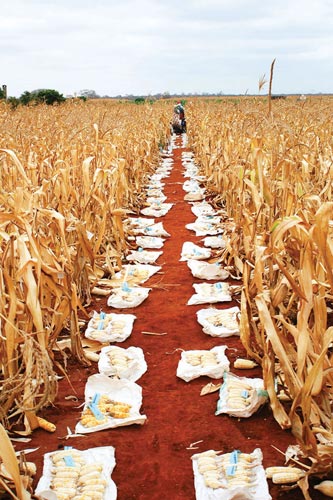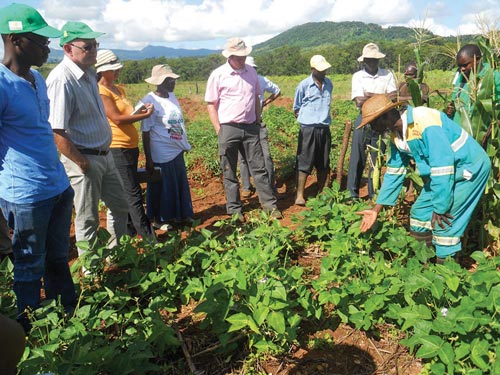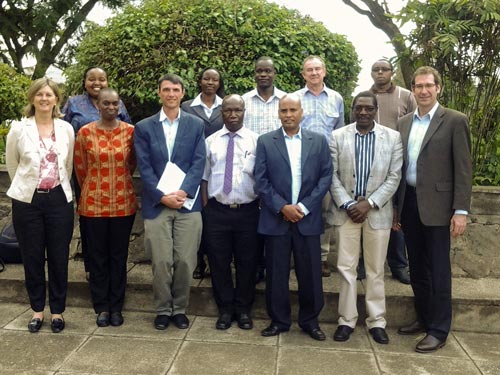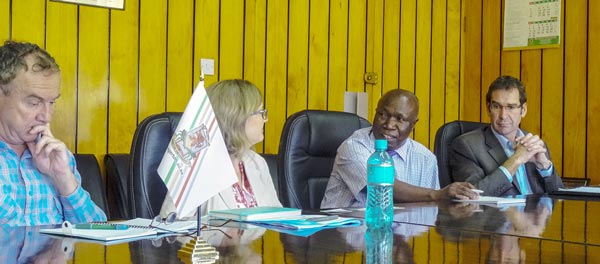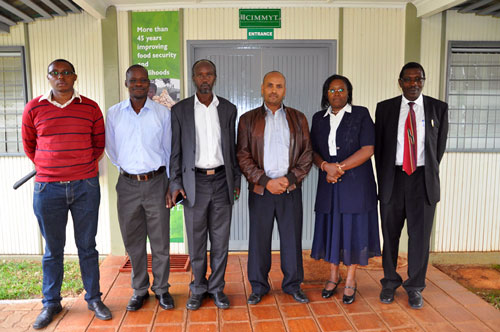African maize farmers get support to mitigate impact of poor soils
NAIROBI, Kenya (CIMMYT) – As the global community marks World Soil Day, African smallholder farmers are contending with low yields due to low-fertility soils prevalent in most parts of sub-Saharan Africa. This situation has affected the food security of over 300 million people in the region who depend on maize as their staple food.
For the majority of these smallholder farmers, access to inputs like fertilizers to boost soil productivity has been restricted due to their high cost. The reality is that in Africa fertilizers cost up to six times more than in any other continent.
As a result, nearly three quarters (about 70 percent) of eastern and southern Africa’s maize is grown without fertilizers. As the International Maize and Wheat Improvement Center (CIMMYT) and partners work to give farmers a partial solution to this enor
mous challenge, efforts must be intensified to protect and maintain soil resources for sustainable development in Africa and the globe.
The Improved Maize for African Soils (IMAS) Project addresses the problem of low nitrogen in soils. Smallholder farmers can expect to harvest up to 25 percent more from new maize varieties developed by the IMAS project.
These varieties are nitrogen use efficient (NUE), which means they utilize more efficiently the small amount of fertilizer that farmers can afford to apply (typically less than 20 kilograms per hectare) compared to varieties currently on the market. The IMAS project is a public-private partnership involving CIMMYT, the Kenya Agricultural and Livestock Research Organization, South Africa’s Agricultural Research Council and DuPont Pioneer.
In two years – between 2014 and 2015 – 21 NUE hybrids were successfully released in Tanzania, Malawi, Mozambique, South Africa, Uganda and Zimbabwe. In addition, IMAS helped to increase seed production and distribution of three existing NUE varieties. According to Michael Olsen, IMAS Project Leader, these varieties are expected to reach approximately 84,000 farmers.
“Giving smallholder farmers practical solutions within their environmental conditions is a sustainable means to not only preserve soil resources but address key challenges in maize farming, which is a major livelihood for millions in Africa,” Olsen said.
Many of the released NUE hybrids carry additional traits that are important in the region, such as tolerance to drought and maize lethal necrosis, a devastating viral disease that is new in the region. Donasiana Limo, a farmer from Olkalili village in northern Tanzania, attests to the good performance of HB513, a drought-tolerant and NUE variety he planted during the main cropping season between January and March 2015.
“I did not do much to prepare my land because the rains came very late and ended early. With no fertilizer and failed rains, I did not expect to harvest the seven bags of 50 kilograms from eight kilograms of HB513 seed,” Donasiana said.
“If I had time to prepare my land and added fertilizer, the harvest would have been so much more.”
Many more farmers from this remote village have benefited immensely from HB513, including Valeria Pantaleo.
Sustainable solutions for African farmers need to be addressed during World Soil Day deliberations. Efforts to facilitate smallholders’ access to inputs like fertilizers are critical. In addition, to help arrest further soil deterioration emphasis must be placed on adopting correct agronomic practices and appropriate crop varieties available on the market that are well suited to different soil management systems.
Policymakers must formulate strategies for adopting universal practices that maintain soil resources and are adapted to farming environments across Africa. Kenya has already set the pace for maize breeding in Africa by including performance in low-nitrogen soils as a special prerequisite for maize variety release, a step that will help enhance healthy soils in Africa if adopted by other regulatory agencies.
Links for more information
- Update on the IMAS Project
- Follow the IMAS conversation on Twitter during #WorldSoilDay via #IMASPro #NUEmaize
- Global Soil Week 2015
- International Year of Soils 2015
- World Soil Day
- CIMMYT maize research
For information, please contact: Michael Olsen: IMAS Project Leader| Brenda Wawa: Media Contact
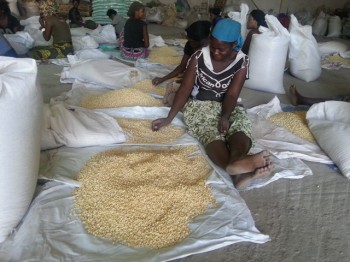
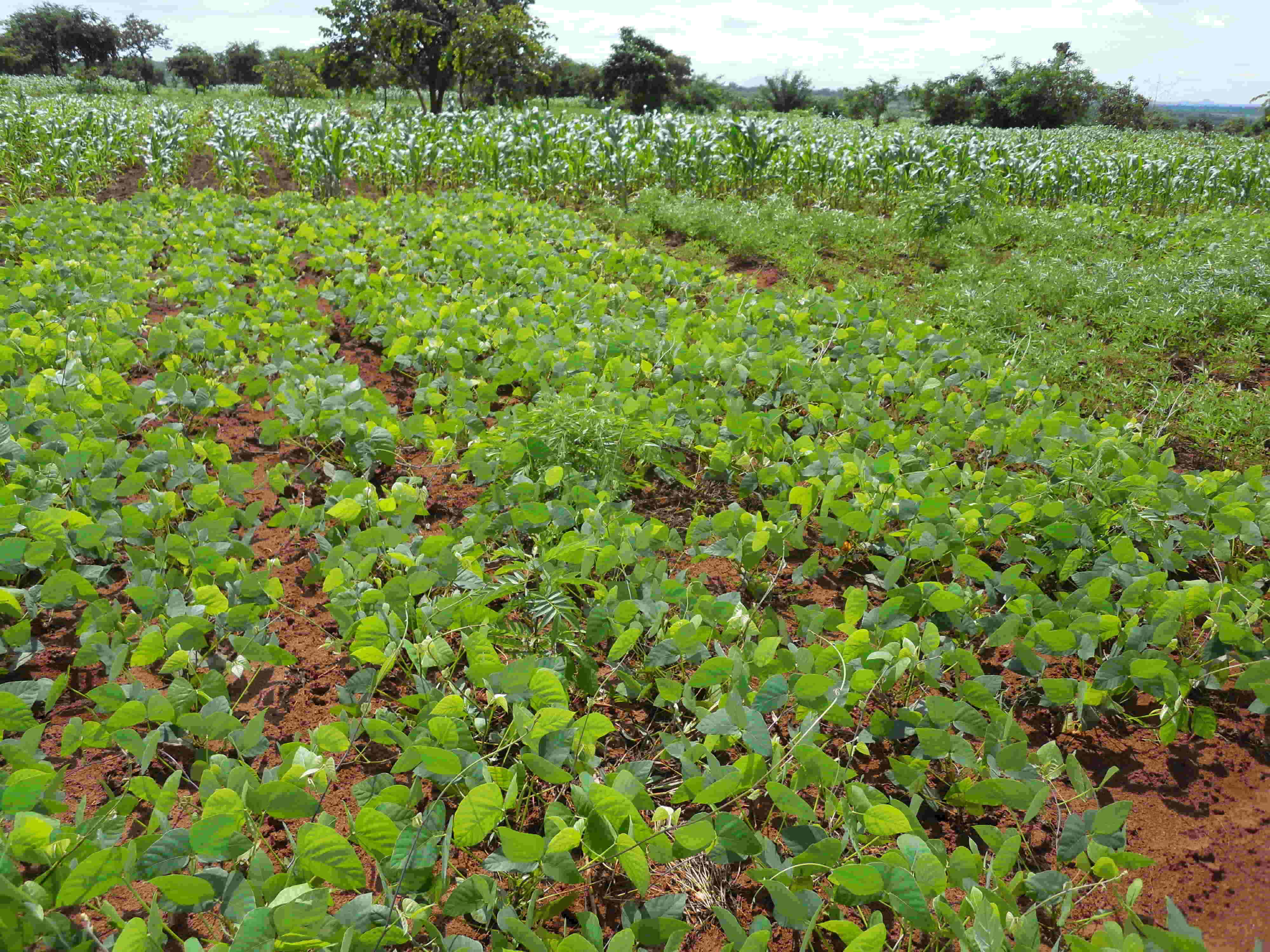
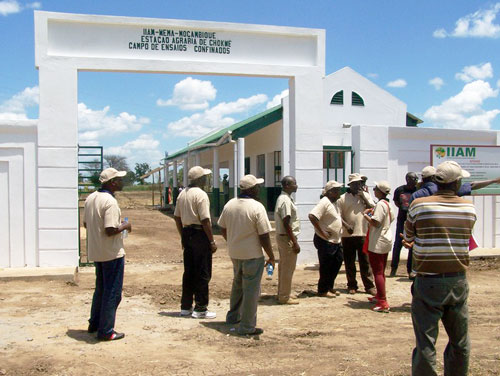
 These momentous breakthroughs were revealed at the 7th WEMA Project Review and Planning Meeting in Maputo, Mozambique, which took place February 8–12, 2015. In his opening remarks, Dr. Inacio Mapossé (pictured left), IIAM’s Director General, said that Mozambique’s Ministry of Agriculture had been renamed to the Ministry of Agriculture and Food Security. This, he emphasized, was not just an exercise in words, but also underscored the importance of projects such as WEMA. In his words, “In Mozambique, you cannot talk about food security without talking about maize.” True. Statistics show that nearly all (95 percent) of Mozambique’s smallholders grow maize (report forthcoming), and that maize covers nearly half (40 percent) of the land devoted to annual crops. Hence, the ministry could well have been renamed to ‘The Ministry of Maize’ and the cap would have fitted!
These momentous breakthroughs were revealed at the 7th WEMA Project Review and Planning Meeting in Maputo, Mozambique, which took place February 8–12, 2015. In his opening remarks, Dr. Inacio Mapossé (pictured left), IIAM’s Director General, said that Mozambique’s Ministry of Agriculture had been renamed to the Ministry of Agriculture and Food Security. This, he emphasized, was not just an exercise in words, but also underscored the importance of projects such as WEMA. In his words, “In Mozambique, you cannot talk about food security without talking about maize.” True. Statistics show that nearly all (95 percent) of Mozambique’s smallholders grow maize (report forthcoming), and that maize covers nearly half (40 percent) of the land devoted to annual crops. Hence, the ministry could well have been renamed to ‘The Ministry of Maize’ and the cap would have fitted!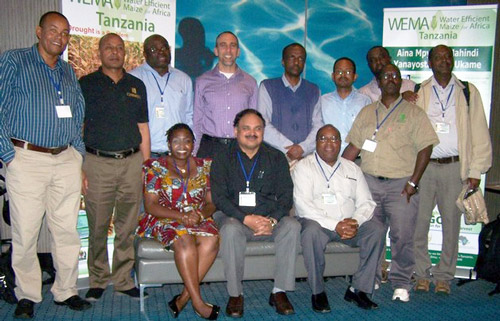
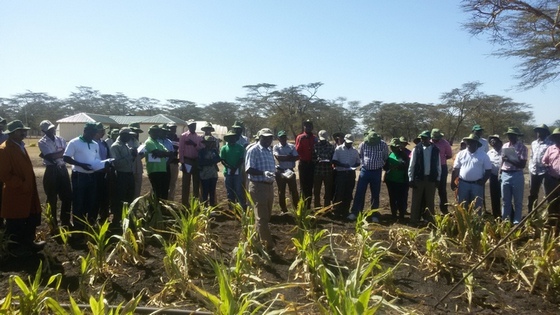
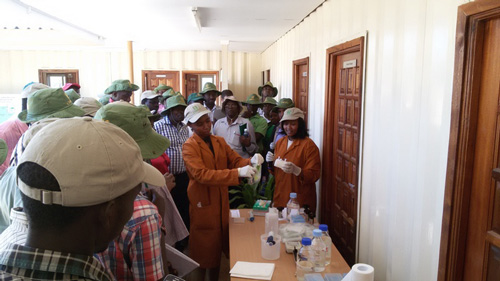
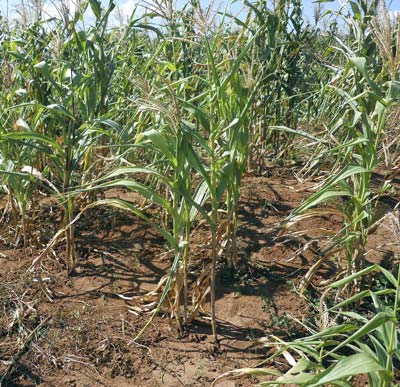
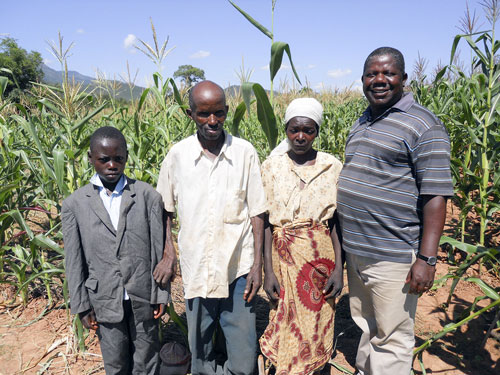
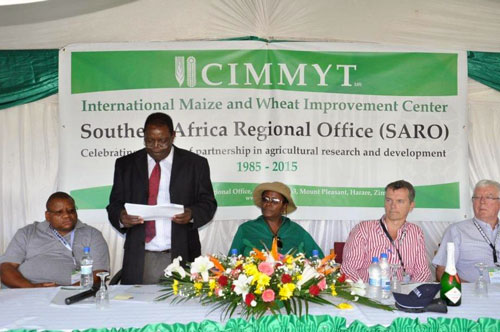
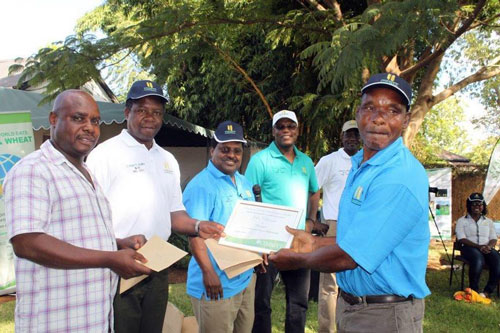
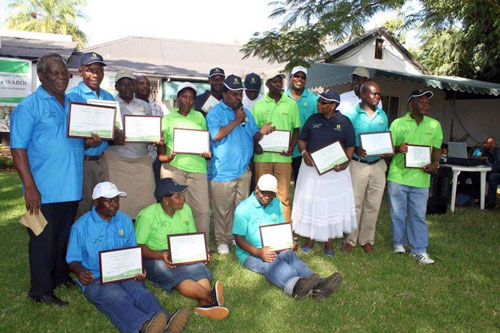
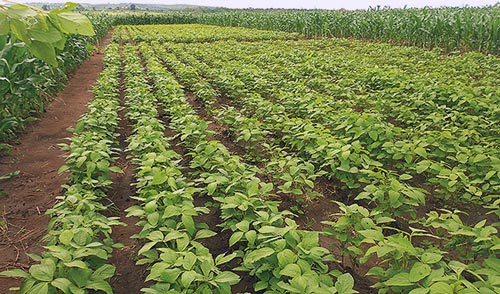
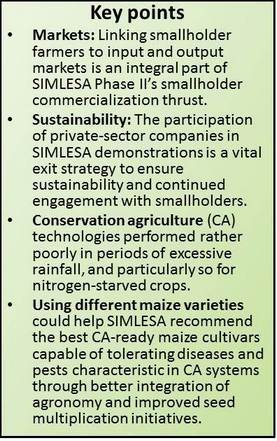 In Malawi, the field visits began at Kasungu District, with 16 farmers and technical staff from Mozambique who were on an exchange visit also participating. The group visited outscaling initiatives by the National Association of Smallholder Farmers of Malawi (NASFAM), in which maize–groundnut rotations and maize–pigeonpea systems are being implemented through lead farmers. More than 120 households per field learning site are participating in the demonstrations on each of the five NASFAM sites visited.
In Malawi, the field visits began at Kasungu District, with 16 farmers and technical staff from Mozambique who were on an exchange visit also participating. The group visited outscaling initiatives by the National Association of Smallholder Farmers of Malawi (NASFAM), in which maize–groundnut rotations and maize–pigeonpea systems are being implemented through lead farmers. More than 120 households per field learning site are participating in the demonstrations on each of the five NASFAM sites visited.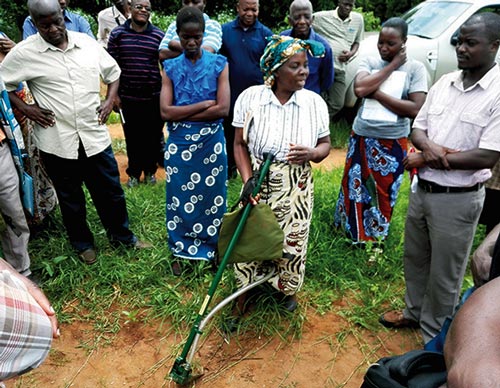

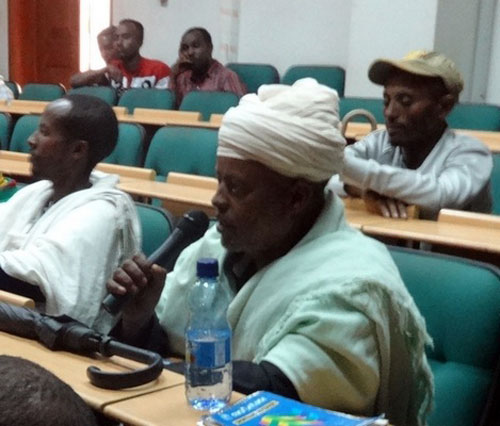
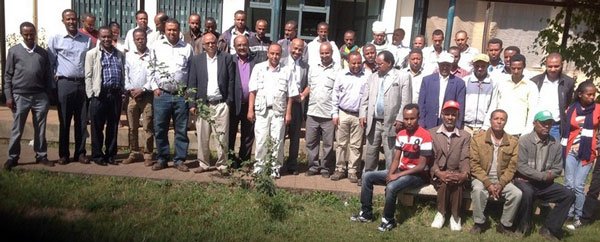
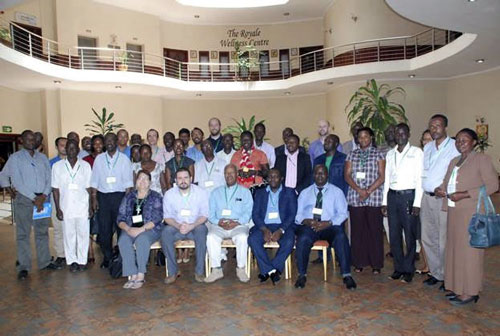
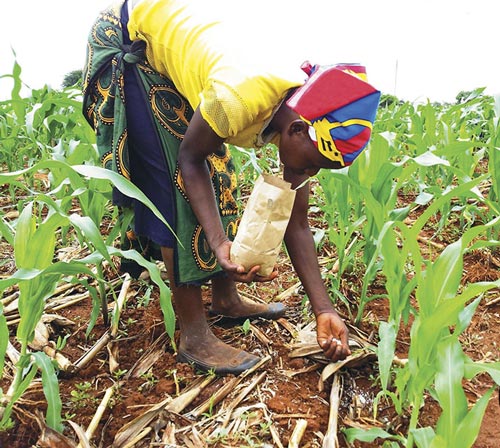
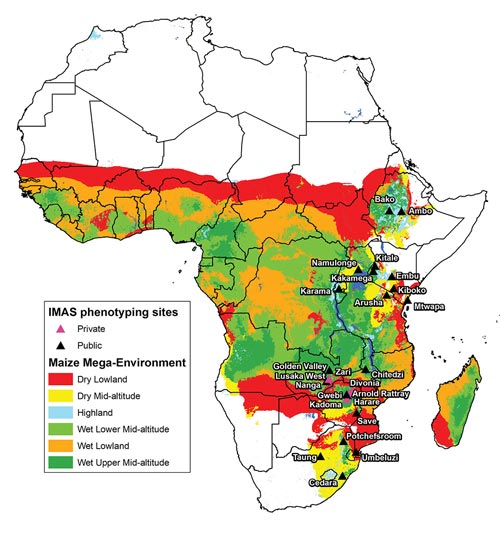 A public-private partnership that, along with CIMMYT, involves national research organizations such as the Kenya Agricultural & Livestock Research Organization (
A public-private partnership that, along with CIMMYT, involves national research organizations such as the Kenya Agricultural & Livestock Research Organization (